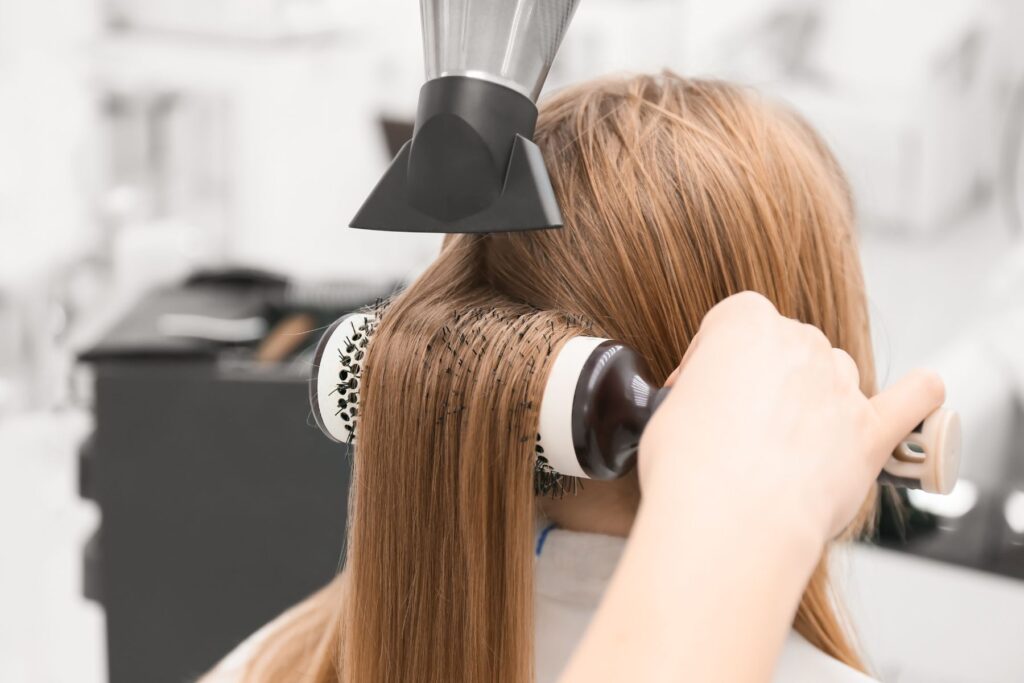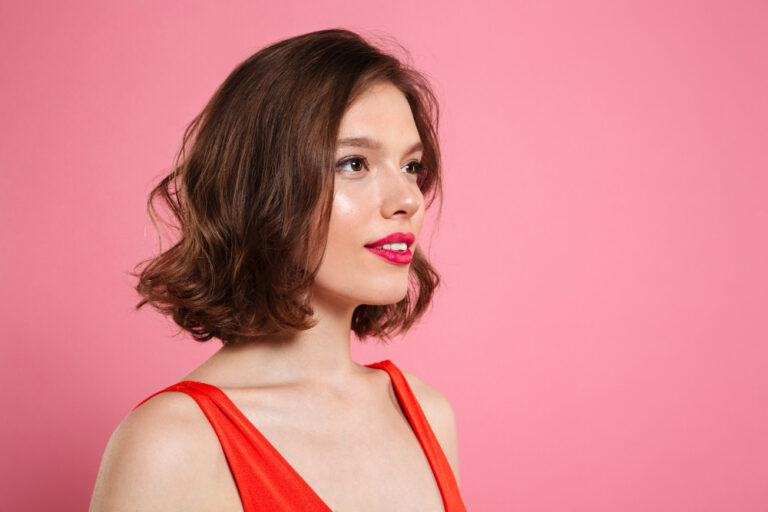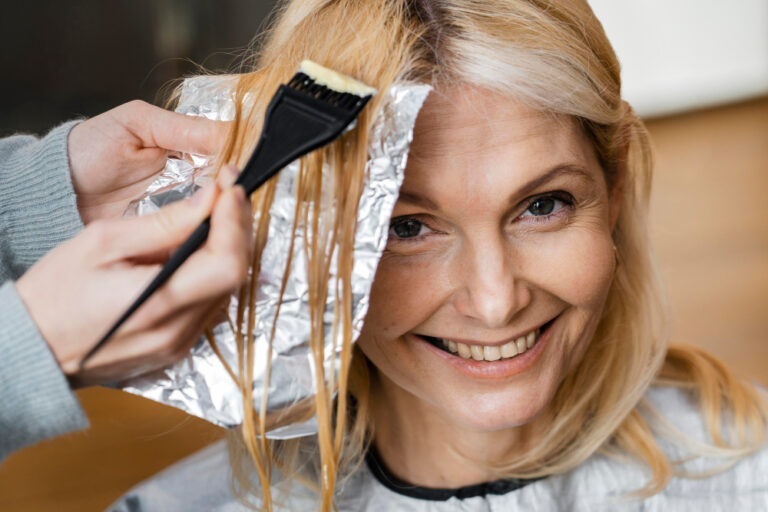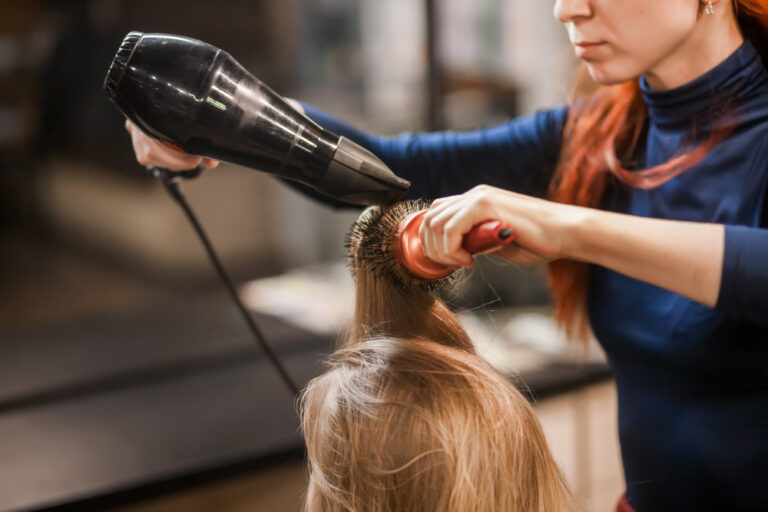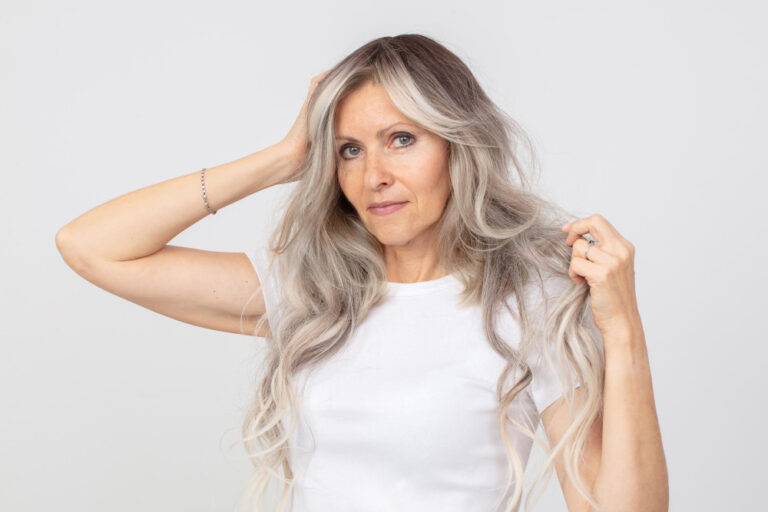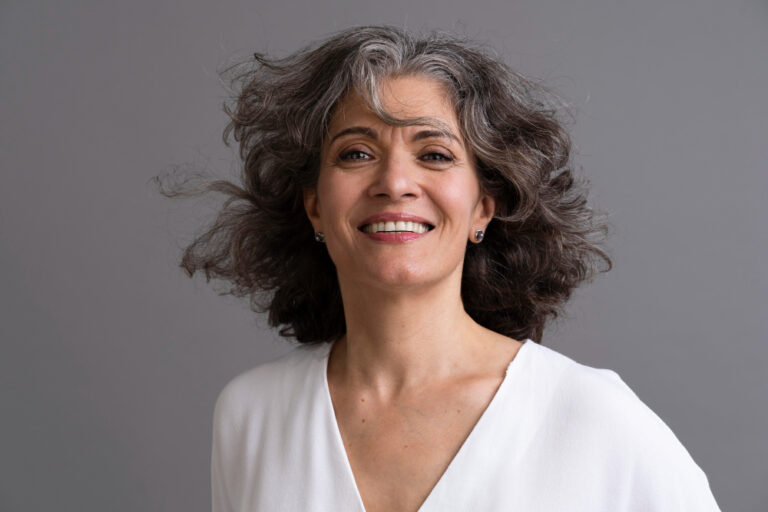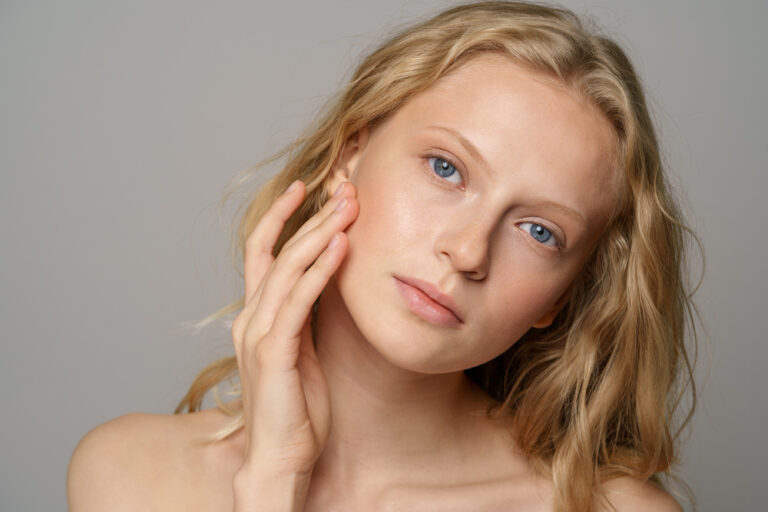We all know that taking care of our hair is no walk in the park. It’s a meticulous task that requires the right products, practices, and patience. One of the most common practices, and perhaps the most debated, is the use of heat, specifically, blow drying.
Blow drying is the go-to method for most of us when it comes to drying out hair post-shower. It’s quick, it’s easy, and let’s face it, it leaves our hair looking like we just stepped out of a salon. But, with the rise of natural hair care advocates and horror stories of heat damage, many are left wondering if their trusty hairdryer is a friend or foe.
So, if you’ve been losing sleep over the thought of damaging your precious locks with your blow dryer, don’t worry! We’re about to dive into this heated debate and see if blow drying really is the villain it’s made out to be.
How Does Heat Affect Hair Structure?
Your hair is a complex structure made up of three main parts: the cuticle, the cortex, and the medulla.
- The Cuticle: This is the outermost layer of your hair. Imagine it as a protective coat of armor made up of overlapping cells, sort of like roof shingles. The cuticle’s job is to shield the inner layers from damage. It’s also responsible for the shine and smoothness of your hair.
- The Cortex: Beneath the cuticle lies the cortex, the thickest layer of your hair. This is where the magic happens. The cortex holds the hair’s pigment, determining its color, and is responsible for the strength, elasticity, and texture of your hair.
- The Medulla: This is the innermost layer, often found in thicker hair types and sometimes absent in fine or thin hair. The medulla’s role is still a bit of a mystery, but it’s believed to be involved in the hair’s ability to absorb moisture.
When we apply heat to our hair, like when we’re blow drying, it affects all three layers. The heat causes the water in the hair to turn into steam, which can lead to moisture loss if done excessively. It can also cause the cuticle to lift, leading to dry, brittle hair and split ends.
Looking for a fresh new look? Take a look at our article about french bobs without bangs.
On the other hand, controlled heat can help in styling as it temporarily changes the shape of the hair, thanks to the changes it induces in the cortex. The key here is ‘controlled’. And that’s where the debate on blow drying comes in. Is it possible to use a blow dryer without causing hair damage?
The Pros and Cons of Blow Drying
Like most things in life, blow drying has its pros and cons, and understanding these can help us make decisions about our hair care regimen.
Pros of Blow Drying
- Speed and Convenience: Let’s face it, we live in a fast-paced world, and time is of the essence. Blow drying is a quick and efficient way to dry your hair, especially if you’re always on the go. It’s also handy during colder months when air drying can be a chilly ordeal.
- Enhanced Hair Volume and Style Control: If you’re a fan of voluminous, salon-style hair, a blow dryer is your best friend. It gives you the ability to shape and style your hair in ways that air drying simply can’t. A good blowout can add bounce and body to your hair, giving you that coveted ‘just left the salon’ look.
For those seeking that perfect volume and bounce, learn everything about achieving a bouncy blowout that delivers stunning results.
Cons of Blow Drying
- Potential for Heat Damage: This is the biggie. Excessive heat can lead to a lifted cuticle, resulting in dryness, frizz, and breakage. Hair that’s regularly exposed to high heat can become brittle and prone to split ends. It’s like sunbathing without sunscreen – a surefire recipe for damage.
- Long-term Effects on Hair Texture and Health: Over time, regular blow drying can alter the texture of your hair, making it feel rougher and look duller. It can also lead to moisture loss, which impacts the overall health of your hair. Your once vibrant locks may start to look lifeless and lackluster.
Tips to Safely Blow Dry Your Hair
The trick is to blow dry smart, not hard. Here are some expert tips to help you enjoy the benefits of blow drying without compromising the health of your hair.
- Use Heat Protectant Products: Heat protectant sprays create a protective barrier on the hair cuticle, reducing moisture loss, preventing cuticle lift, and minimizing damage. They’re an absolute must if you’re a regular user of heat styling tools. Just spray on damp hair before blow drying, and you’re good to go.
- Optimal Techniques: Always keep the dryer at least 6-8 inches away from your hair to prevent overheating. Lower heat settings are kinder to your hair, so save the high heat for rough drying and switch to medium or cool to finish off. Timing is also crucial. Over-drying can lead to dryness and breakage, so aim to dry until your hair is just slightly damp, and let it air dry the rest of the way.
Alternative Drying Methods
There are alternative drying methods that can give your hair a break from the heat, while still leaving it looking fabulous. Here are a few worth considering:
- Air Drying: The most natural and gentle way to dry your hair is to simply let it air dry. This method allows your hair to retain its natural moisture, reducing the risk of dryness and breakage. To effectively air dry, gently squeeze out excess water with your hands, apply a leave-in conditioner or a styling cream to control frizz, and let nature do the rest. Remember, no rough towel drying – it can cause friction and lead to frizz and breakage.
- Using Absorbent Towels or T-Shirts: If you’re in a bit of a hurry, an absorbent towel or a cotton t-shirt can help reduce moisture without the need for heat. They’re less abrasive than regular terrycloth towels, meaning less frizz and fewer split ends. Just wrap your hair and gently squeeze, don’t rub. Microfiber towels are a great option as they’re super absorbent and gentle on the hair.
- Leave-In Conditioners and Styling Products: These can be a lifesaver when air drying. They add moisture, control frizz, and can help define your hair’s natural texture. Look for products with natural ingredients that nourish and hydrate the hair. Apply to damp hair and comb through for even distribution, then sit back and let your hair dry naturally.
Expert Hair Care Routine for Heat-Styling Enthusiasts
For those of us who love the look and feel of a good blowout, it’s all about balance. Yes, you can enjoy the benefits of heat styling, but you also need to show your hair some TLC to counteract potential damage.
- Consider Restorative Treatments: If heat styling is a regular part of your routine, restorative treatments should be too. Hair masks, oils, and deep conditioners are your hair’s best friends. They replenish lost moisture, nourish your hair, and help repair damage. Look for products rich in proteins, natural oils, and hydrating ingredients like aloe vera and panthenol. Use at least once a week for best results.
- How Often to Heat Style and When to Take Breaks: It’s crucial to give your hair a break from the heat. Try to limit heat styling to two or three times a week at most, and give your hair a completely heat-free day at least once a week.
- Professional Treatments for Damaged Hair: If your hair is showing signs of heat damage, such as dryness, breakage, or a straw-like texture, it might be time to seek professional help.
If you are looking for professional blow drying in Ridgewood, make sure to check out Artists and Architects Salon.
Final Thoughts
As long as you’re careful and use heat-protectant products, blow drying shouldn’t cause too much damage.
Remember, every head of hair is unique and what works for one may not work for another. The key is to listen to your hair, understand its needs, and adjust your routine accordingly. It’s all about striking a balance between style and health.

